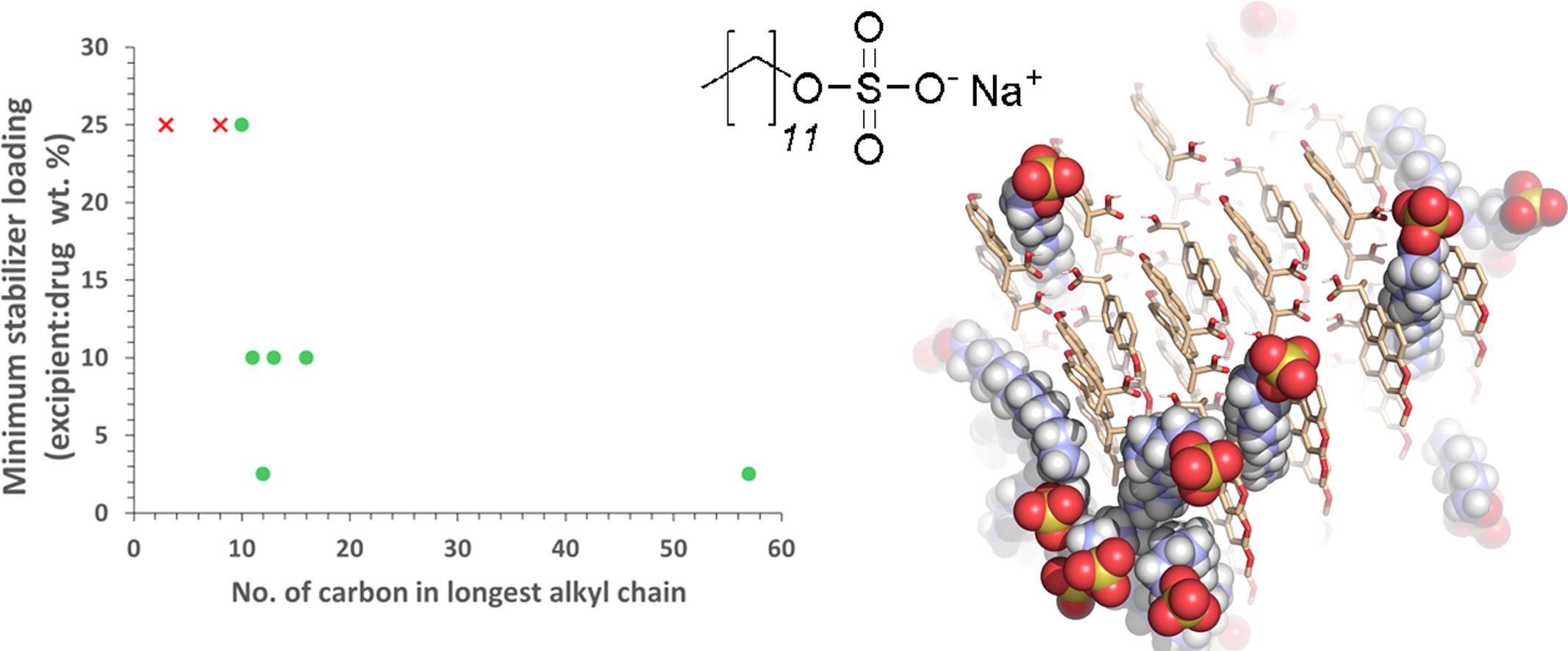Towards an Improved Understanding of Drug Excipient Interactions to Enable Rapid Optimization of Nanosuspension Formulations

Suspensions of drug nanoparticles known as nanosuspensions have emerged as a successful enabling formulation approach for poorly soluble drug candidates. These nanoparticles typically require stabilization with specific polymer or surfactant excipients to prevent aggregation from occurring.
This study demonstrates the necessity of formulating drug nanosuspensions with amphiphilic excipients possessing long hydrophobic alkyl or polymer block chains to produce stable nanoparticles. 28 different excipients and excipient combinations at various loadings were screened across the 3 drug compounds and their effectiveness, as characterized by the lowest excipient loading needed to stabilize a monodisperse drug suspension, is quantified as a function of various excipient parameters such as molecular weight, HLB value, CMC, H-bond donors and acceptors, and the length of the hydrophobic alkyl chains and polymer blocks within their molecular structure.
Traditional characterization parameters (molecular weight, HLB value, and CMC) fail to predict excipient effectiveness. The conformational flexibility and length of the hydrophobic regions of amphiphilic excipients appears to be critical for effectiveness. This hypothesis was supported by molecular modeling studies to better understand the interactions between the excipients with the drug nanoparticle surface. More on excipient drug interactions in nanosuspensions

